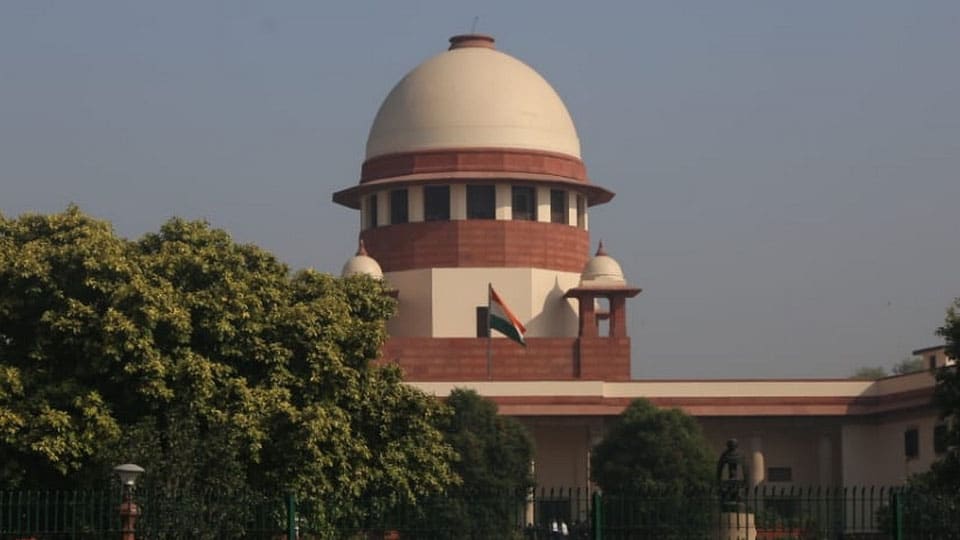“Centre had the power to demonetise all series of a banknote and the Nov. 8, 2016 note ban decision can’t be said to be unreasonable nor was it hit by the doctrine of proportionality.”
New Delhi: The Supreme Court (SC) this morning backed Prime Minister Narendra Modi’s 2016 note ban (demonetisation) decision in a majority judgement and said the decision could not be faulted just because the Centre initiated it. The Centre had the power to demonetise all series of a banknote, adding the Nov. 8, 2016 note ban decision can’t be said to be unreasonable nor was it hit by the doctrine of proportionality, the Apex Court said and added that the period of 52 days given for the exchange of notes was not unreasonable.
The Centre is required to take action after consultation with the Reserve Bank of India (RBI) and there was consultation between the two for six months, four Judges in the five-member Bench said. However, Justice B.V. Nagarathna gave a dissenting judgement, saying demonetisation could have been executed through an act of Parliament and not by the Government.
Some 58 petitions had challenged the Centre’s decision of November 2016 to ban Rs. 1,000 and Rs. 500 currency notes. Rs. 10 lakh crore was wiped out of circulation overnight because of the move. The petitions argued that it was not a considered decision of the Government and should be struck down by the Court.
The Government argued that the Court cannot decide a matter when no tangible relief can be granted. It would be like “putting the clock back” or “unscrambling a scrambled egg”, the Centre said. It also said demonetisation was a “well-considered” decision and part of a larger strategy to combat the menace of fake money, terror financing, black money and tax evasion.
The Five-Judge Constitution Bench headed by Justice S.A. Nazeer heard the arguments before its winter break. The other members of the Bench are Justices B.R. Gavai, A.S. Bopanna and V. Ramasubramanian.
While giving a dissenting judgment, Justice B.V. Nagarathna, however, said: “The measure was well-intentioned and well thought of. It targeted evils such as black money, terror funding and counterfeiting. The measure is declared unlawful purely on legal grounds and not on the basis of objects.”
“Demonetisation of all currency notes of Rs. 500 and Rs. 1000 is unlawful and vitiated. Parliament is a nation in miniature. Parliament’s views on demonetisation are critical and of utmost importance. However, having regard to the fact that the notification has been acted upon, this declaration of law will act only prospectively and will not affect actions already taken. Hence, no relief is being given in the petitions,” the Justice added.








Al though currencies in Western countries do not have high denominations, because most of the legal transactions ( in real-time) take place through the involvement of bank accounts for larger amounts, cheques and credit cards for smaller amounts; still there is a limit of $10,000 USDs or Euros or GBPs are set as the upper limit for deposits through checks and cash. Any amount higher, needs proof of legality of the source of the amount in cash or cheques. For payments exceeding 4 figures, cash is seldom involved. The chances of money laundering, unaccounted black money are small.
In India on the other hand, despite the claim of one deluded poster called @Manoj the other day, the transaction-payments for example in real-time involve cash. Large amounts of cash payments are norm, and there is the rub. , as opportunities for money laundering or acquisition of black money is much higher, as there is no no accounting trail.
I doubt whether the demonetisation of those currencies have stopped money laundering, as there is still INR 2000 bill.
The fact that cost of essential food items in India is much higher in proportion of expenses, for example INR150/litre or higher for cooking oil, where as kit is around 5 USD/Euro/GBP a smaller proportion of expenses, necessitate usage of higher denominations of INR currency bills. in a country where cash is the king and use debit and credit cards like in the West, is not the norm.
In India , INR for money laundering/black money acquisition is shunned, as it is not worth much. The USD is the defacto currency for such purposes which includes bribes to officials /politicians.
The gold smuggling through the Kerala airports and Hawala channel money operations , have taken the black wealth and money laundering to another level. These will be in operation when Mysore airport is ready to receive the A320/Boeing 737 jet liners from the Gulf states. Narendra Modi promised the Keralite so called businessmen resident in the UAE, during his stop over there last year, that he will approve non-stop UAE-Mysore flights. These are the crime bosses who currently smuggle gold , which is getting distributed in Mysore, as well as the expansion of Hawala channel money transactions into Mysore, through Wayanad-Nanjangud-Mysore corridor. The above Keralite businessmen want to expand their operations in Mysore through the airport, and to towns along the way to Bangalore through the 20-lane Mysore-Bangalore highway.
If anything, black wealth and money laundering has massively increased. The officials, including the police and other law enforcing agencies trapped in bribes and commissions by the crime gangs.